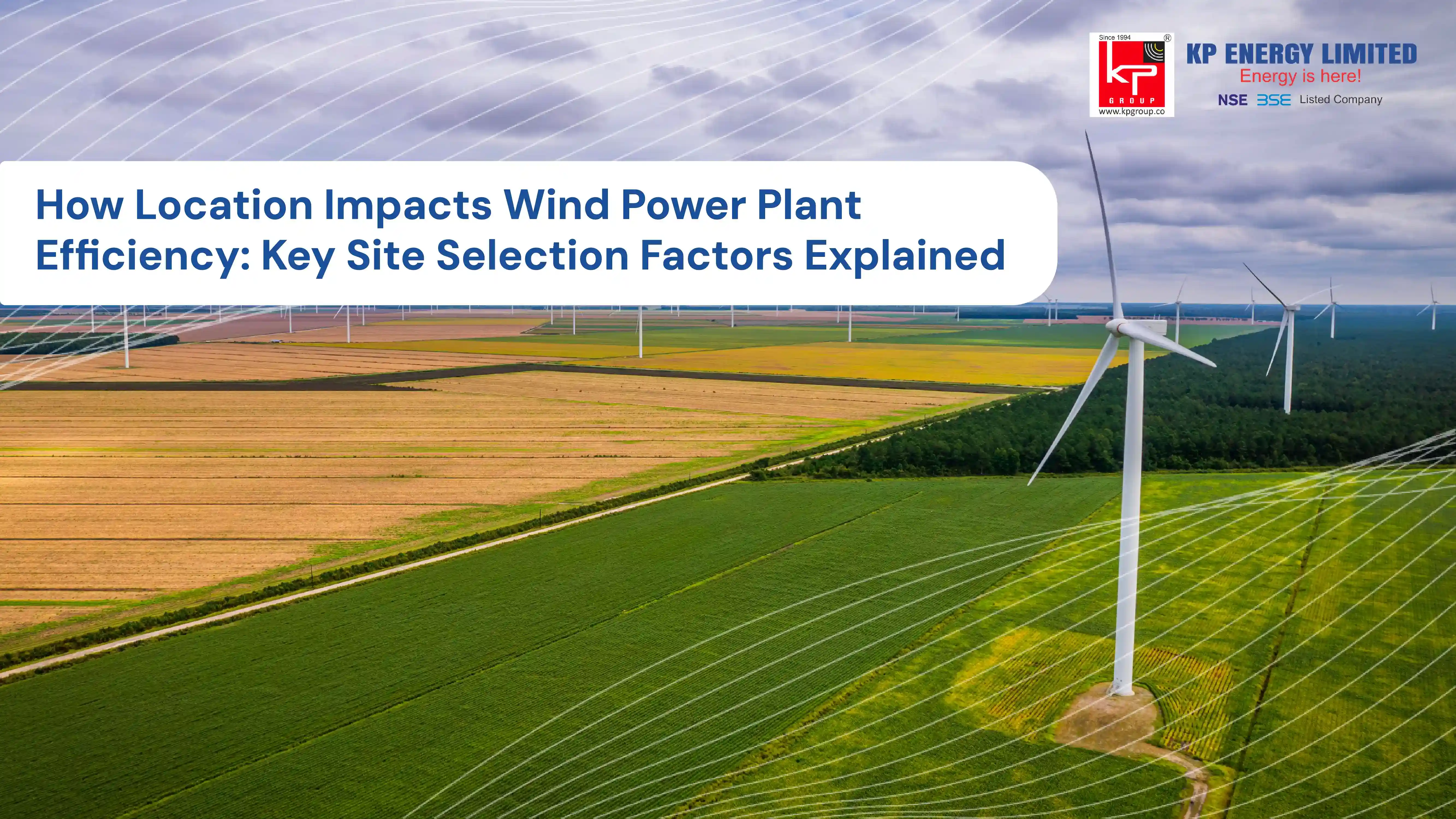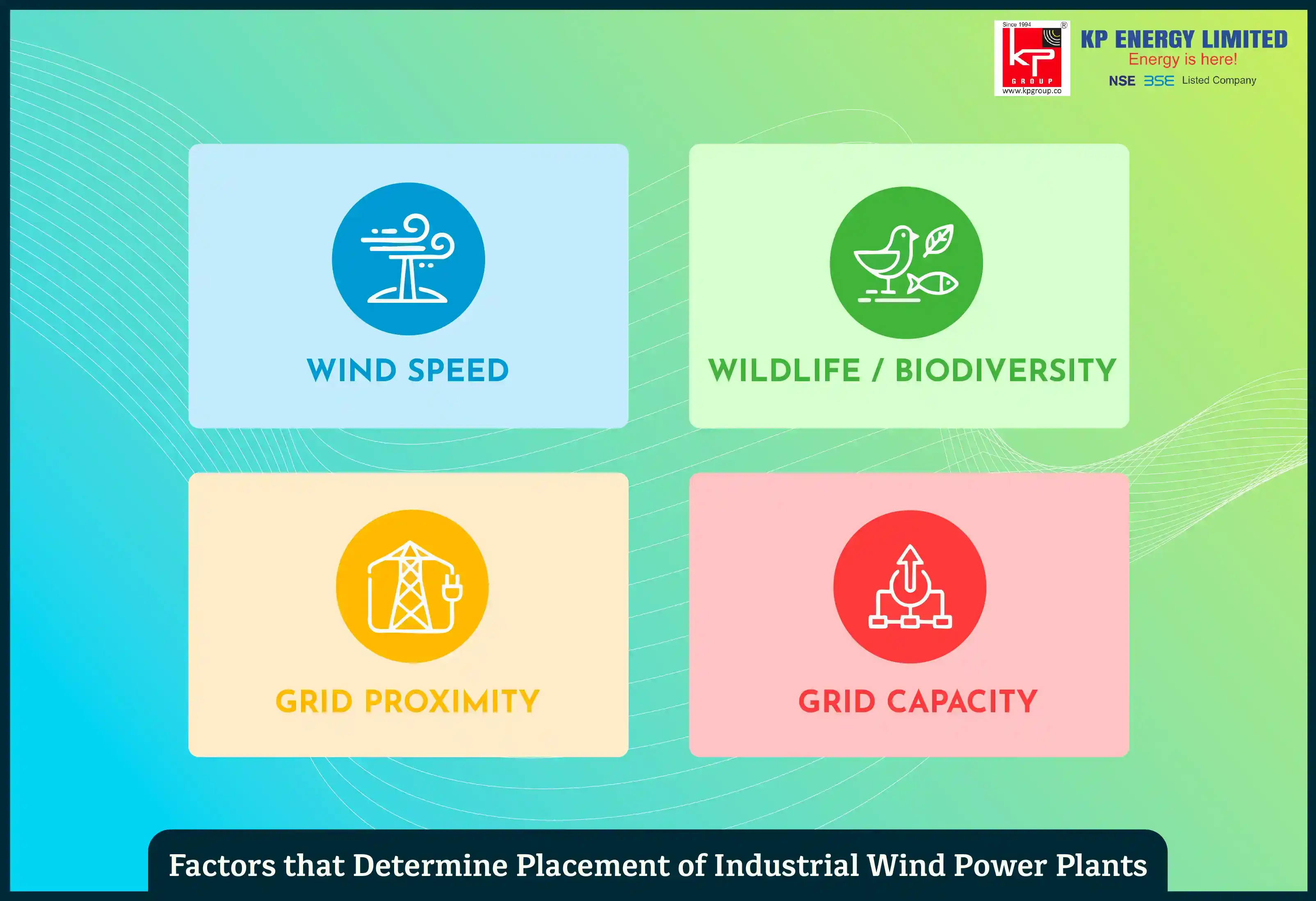
While the future of wind as a source of energy generation is bright, one of the critical areas that often becomes the bottleneck for organizations looking to drive sustainable growth by choosing renewable energy via wind projects is…. Where to build?
The success of a wind farm is determined by its strategic location, as it can harness the maximum wind capacity that it can offer. The selection of the right farmland or location is crucial for maximizing the energy production efficiency while minimizing the risks associated overall. Additionally, choosing the right land for a wind farm involves individuals studying the technical, environmental impact of the wind farm, its economic impact, and regulatory considerations before finalizing the plot.
An ideal location for industrial wind energy projects is a place where wind speed is the highest, the location is on the outskirts, where the residents are not impacted by the construction of the wind farm, it should be ideally somewhere remote but also not too secluded, and also should be in proximity to the existing power lines. Conditions that play a favourable role in the production of wind energy include: smooth hilly surface, open and plain grown area, mountainous regions, away from the natural habitat, an area that can be accessed by transport, and a feasible territory.
A place that is considered to be a good location for wind generation is where the wind speed is 9 miles per hour (mph)—or 4.0 meters per second (m/s)—for small wind turbines and 13 mph (5.8 m/s) for utility-scale turbines.

One of the most critical points that determines the success of the power plant is the overall availability of the winds throughout the day. The availability of the winds that will then generate energy directly influences the revenue of the plant. Further, since wind is a weather phenomenon, there is inherent uncertainty in forecasting the long-term wind availability. Choosing the right experts who build and identify the right farm area for putting up the wind power plant always recommends conducting a wind profile study for a few years through satellite data, which helps predict the area's potential for generating wind output over an extended period.
Doing a thorough assessment of the impact a power plant can have on its surrounding habitat is preliminary. Studying animals and birds’ migration patterns can help minimize any damage or inconvenience caused due to the interaction between wildlife and the turbines. The wrong location selected to place the turbine can deeply affect the local biodiversity.
The importance of wind farm location cannot be understated. The location of wind farms plays a critical role in ensuring maximum output at minimum cost. Optimal placement of a wind farm brings financial benefit to the surrounding area and attracts the development of better infrastructure. The further the power station is from the wind power plant, the greater the loss of energy in transmission. Additionally, more the distance from the power grid, the more expensive and complex the process of adding cables to ensure an uninterrupted connection of energy. At KP Energy, our expert team primarily evaluates the geographic location of the wind farm, its proximity to the substation, the grid capacity, and the feasibility of the entire project to ensure seamless transmission.
One of the limiting factors that limits the generation of energy to its fullest potential is the acceptance of the grid to accommodate the new energy inputs. All centrally located grid that are responsible for the mass distribution of electricity has a certain load capacity beyond which the electricity that is generated goes wasted. In areas where the grid is already performing at its fullest capacity, putting a new power plant there will be challenging and not the best decision.

Like any other large infrastructure project, choosing an appropriate location for a wind farm is paramount in ensuring optimal power production. For a renewable energy source such as wind, environmental factors play a large role in deciding whether a certain location would be economically viable for a wind farm. In cases of large industrial-sized wind farms, societal factors also need to be taken into consideration when selecting the project” location.
Seeing that the energy source for a wind farm is wind, conducting a wind resource mapping is crucial before choosing the final wind farm. An ideal location for a wind farm would have strong, consistent wind speeds, but one where sudden, strong,g short gusts do not occur. These conditions are generally seen in rural areas where large or tall developments are not present nearby. More often than not, the ideal location would be in a large open expanse of land with rolling hills, or out on the ocean (for offshore wind farms). Another factor to keep in mind would be the presence of a transmission network nearby so that the energy that is produced on the farm can be put into the grid easily. Due to the nature of wind turbines, it is highly recommended that the chosen area not be in a bird migration route or an area with a large bird population. This is due to the high risk that the fast-spinning turbine blade poses to these birds.
A large infrastructure project also needs to consider the effect it has on the nearby society. Many societies have an issue with wind farms being too close to them due to their visual and noise impacts. Wind turbines are large, imposing structures that are visible from quite a distance, while the fast-spinning blades also create noise pollution. For this reason, as such few communities have created issues with large wind farms being close to their homes. Others, however, do also welcome the projects as they bring employment opportunities, provide them with better infrastructure, along potentially cheaper electricity for the neighboring areas. As a rule of thumb, wind farm developers must always talk and discuss with the local stakeholders on the impact it will cause to the local neighborhood, and their acceptance of setting up the power plant to ensure the grid connectivity and social understanding is met.
All in all, in the fast-evolving landscape of wing energy, finding out the best land that is suitable of energy generation is an undertaking, as it requires one to be sure of consistent wind speed, favourable weather conditions and wind supply, an understanding and willing local neighbourhood, favourable land and soil conditions, no negative impact to the natural habitat and most importantly, its proximity to the power grid. Having launched a series of pioneering projects in the generation of wind energy projects, KP Energy is committed to building a resilient energy future. At KP Energy, our expert team primarily evaluates the location of the wind farm, its proximity to the substation, the grid capacity, and the feasibility of the entire project to ensure seamless transmission.
KP Energy has a strong footprint in Gujarat's wind energy sector, having developed multiple key projects. Their portfolio is highlighted by the large-scale 252 MW Sidhpur-2 CPP project in Dwarka, complemented by the 70.3 MW Mahuva-1 and 69.3 MW Kuchhdi IPP & CPP projects. With additional installations like Matalpar and Ratadi, these projects collectively demonstrate KP Energy's deep commitment to wind development in Gujarat, reinforcing their status as a significant player in India's renewable sector.
Q1: Are wind farms safe for nearby people?
There have been multiple wind power plants that have been established on land, and it has not shown to cause any negative damage or impact on the residents around the place. In fact, it has created more employment and job opportunities for residents.
Q2: Do wind turbines need fast winds in order to generate good power?
Wind turbines actually need consistent wind in order to produce more power. Wind turbines generally operate between 7mph (11km/h) and 56mph (90km/h). The efficiency is usually maximised at about 18mph (29km/h).
Q3: Is wind energy a clean source of energy?
Wind energy is a clean source of energy that is produced while harnessing the winds that are available in the open space and turning the kinetic energy into electricity.